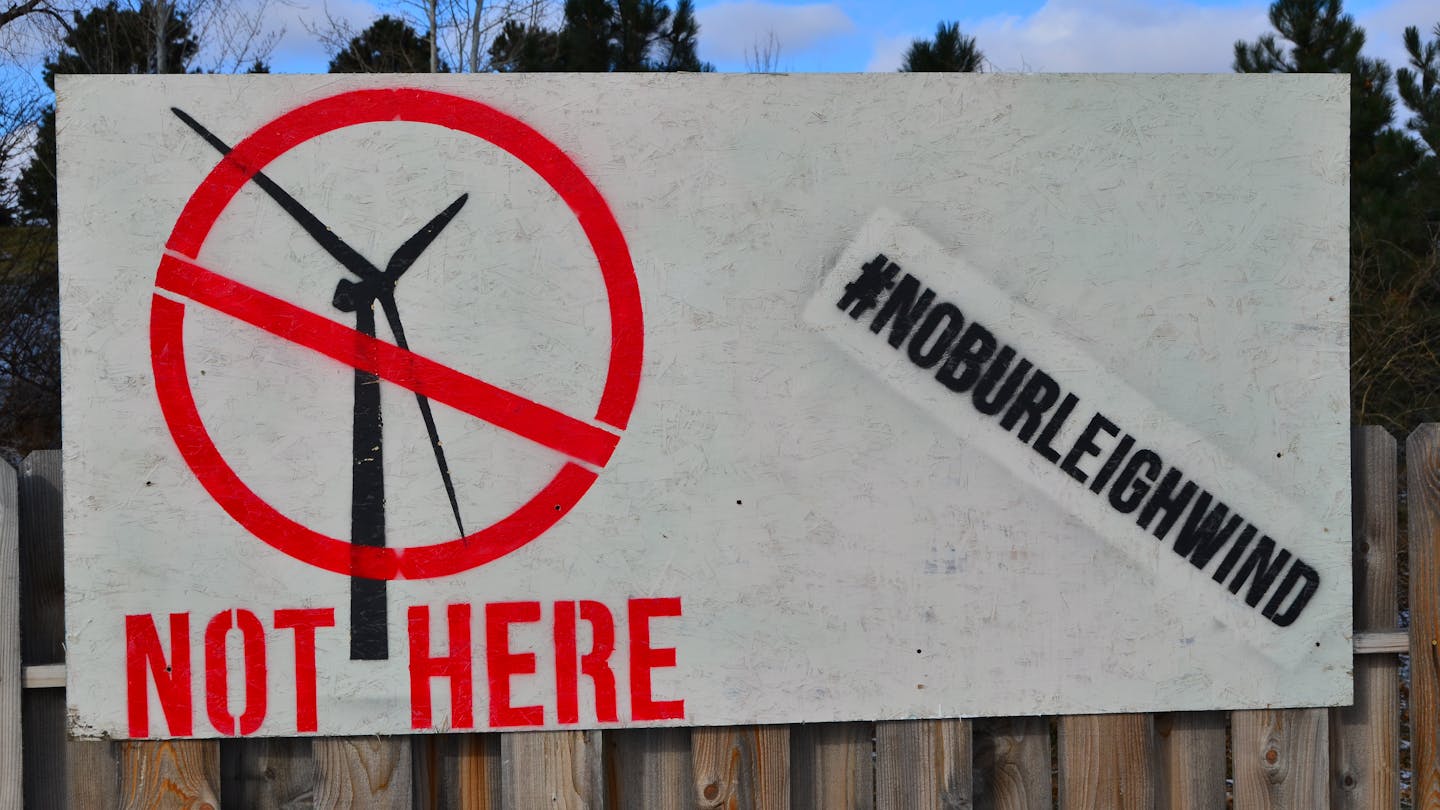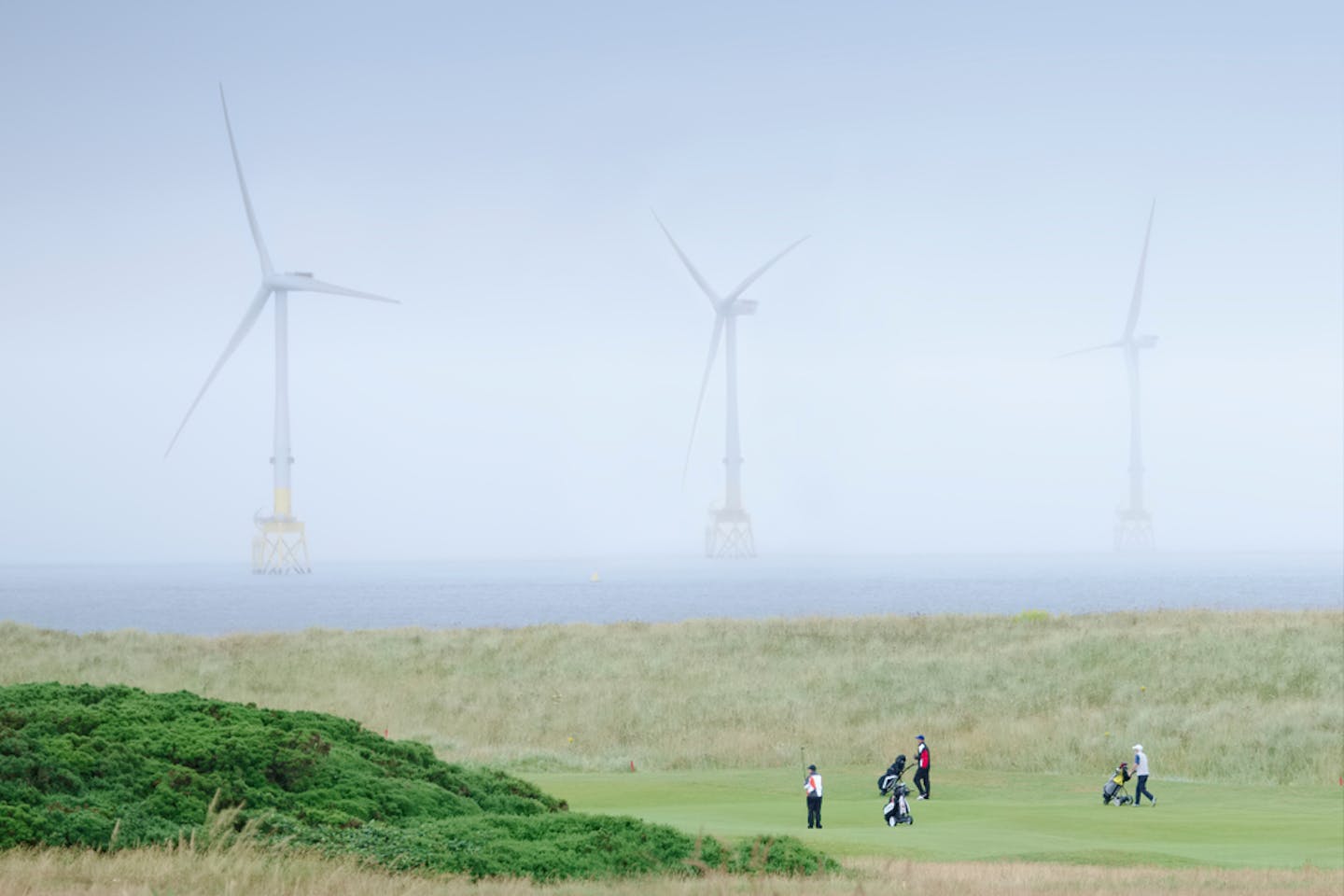
When Donald Trump recently claimed, during what was supposed to be a press conference about an EU trade deal, that wind turbines were a “con job” that “drive whales loco”, kill birds and even people, he wasn’t just repeating old myths. He was tapping into a global pattern of conspiracy theories around renewable energy – particularly wind farms. (Trump calls them “windmills” – a climate denier trope.)
Like 19th century fears that telephones would spread diseases, wind farm conspiracy theories reflect deeper anxieties about change. They combine distrust of government, nostalgia for the fossil fuel era, and a resistance to confronting the complexities of the modern world.
And research shows that, once these fears are embedded in someone’s worldview, no amount of fact checking is likely to shift them.
A short history of resistance to renewables
Although we’ve known about climate change from carbon dioxide as probable and relatively imminent since at least the 1950s, early arguments for renewables tended to be seen more as a way of breaking the stranglehold of large fossil-fuel companies.

The idea that fossil companies would delay access to renewable energy was nicely illustrated in a classic epidode of The Simpsons when Mr Burns builds a tower to blot out the sun over Springfield, forcing people to buy his nuclear power.
Back in the real world, similar dynamics were at play. In 2004, Australian prime minister John Howard gathered fossil fuel CEOs help him slow the growth of renewables, under the auspices of a Low Emissions Technology Advisory Group.
Meanwhile, advocates of renewables – especially wind – often found it difficult to build public support wind, in part because the existing power providers (mines, oil fields, nuclear) tend to be out of sight and out of mind.
Public opposition has also been fed by health scares, such as “wind turbine syndrome”. Labelled a “non-disease” and non-existent by medical experts, it continued to circulate for years.
The recent resistance
Academic work on the question of anti-wind farm activism is revealing a pattern: conspiracy thinking is a stronger predictor of opposition than age, gender, education or political leaning.
In Germany, the academic Kevin Winter and colleagues found that belief in conspiracies had many times more influence on wind opposition than any demographic factor. Worryingly, presenting opponents with facts was not particularly successful.
In a more recent article, based on surveys in the US, UK and Australia which looked at people’s propensity to give credence to conspiracy theories, Winter and colleagues argued that opposition is “rooted in people’s worldviews”.
If you think climate change is a hoax or a beat-up by hysterical eco-doomers, you’re going to be easily persuaded that wind turbines are poisoning groundwater, causing blackouts or, in Trump’s words, “driving the whales loco”.
Wind farms are fertile ground for such theories. They are highly visible symbols of climate policy, and complex enough to be mysterious to non-specialists. A row of wind turbines can become a target for fears about modernity, energy security or government control.
This, say Winter and colleagues, “poses a challenge for communicators and institutions committed to accelerating the energy transition”. It’s harder to take on an entire worldview than to correct a few made-up talking points.
What is it all about?
Beneath the misinformation, often driven by money or political power, there’s a deeper issue. Some people – perhaps Trump among them – don’t want to deal with the fact that fossil technologies which brought prosperity and a sense of control are also causing environmental crises. And these are problems which aren’t solved with the addition of more technology. It offends their sense of invulnerability, of dominance. This “anti-reflexivity”, as some academics call it, is a refusal to reflect on the costs of past successes.
It is also bound up with identity. In some corners of the online “manosphere”, concerns over climate change are being painted as effeminate.
Many boomers, especially white heterosexual men like Trump, have felt disorientated as their world has shifted and changed around them. The clean energy transition symbolises part of this change. Perhaps this is a good way to understand why Trump is lashing out at “windmills”.
This article is republished from The Conversation, a nonprofit, independent news organization bringing you facts and trustworthy analysis to help you make sense of our complex world. It was written by: Marc Hudson, University of Sussex
Read more:
- The Rodrigues parakeet’s last day: what one extinct bird tells us about the role of museums
- Protesting farmers are having to fight off the radical right, conspiracy theorists and climate sceptics
- Wind turbines are already skyscraper-sized – is there any limit to how big they will get?
Marc Hudson was employed as a post-doctoral researcher on two occasions on projects funded by the UKRI-funded Industrial Decarbonisation Research and Innovation Centre.


 The Conversation
The Conversation
 Reuters US Business
Reuters US Business KUOW Public Radio
KUOW Public Radio Charleston Gazette
Charleston Gazette AlterNet
AlterNet Reno Gazette-Journal
Reno Gazette-Journal The Columbian Business
The Columbian Business WRDW-TV News 12
WRDW-TV News 12 The Advocate
The Advocate The Daily Sentinel
The Daily Sentinel Axios
Axios